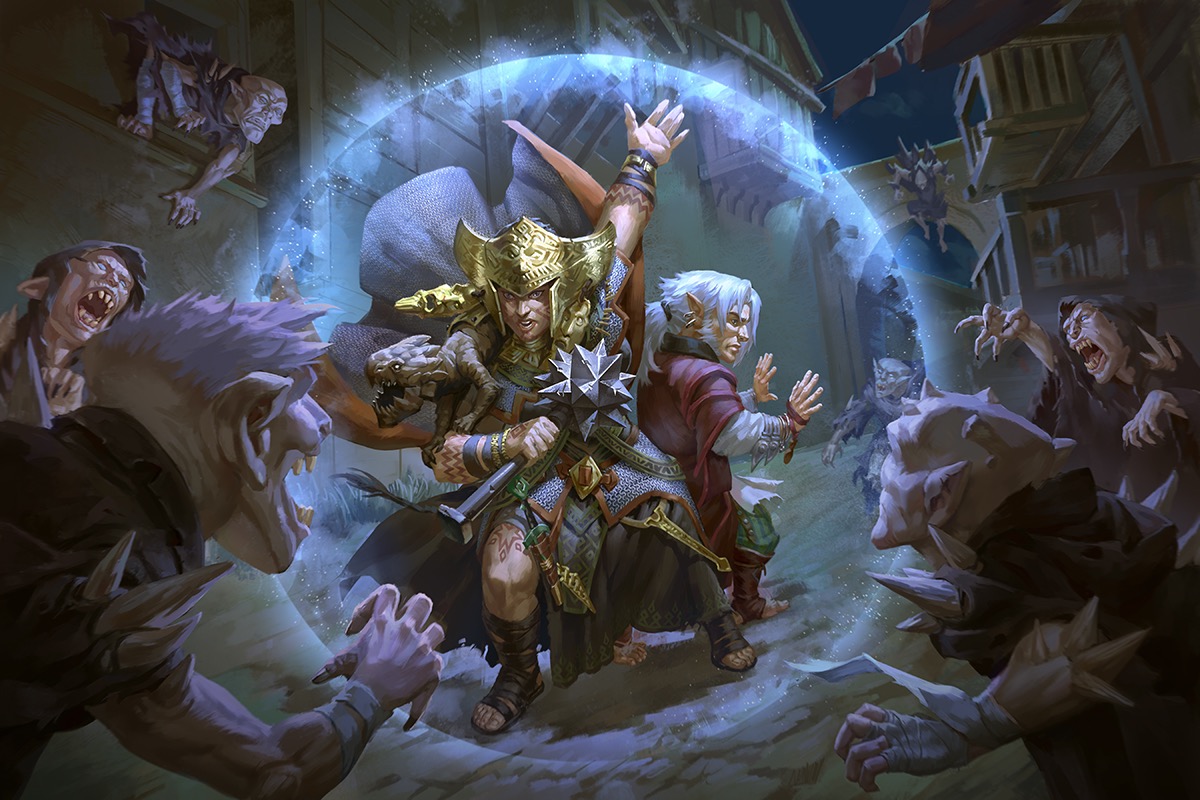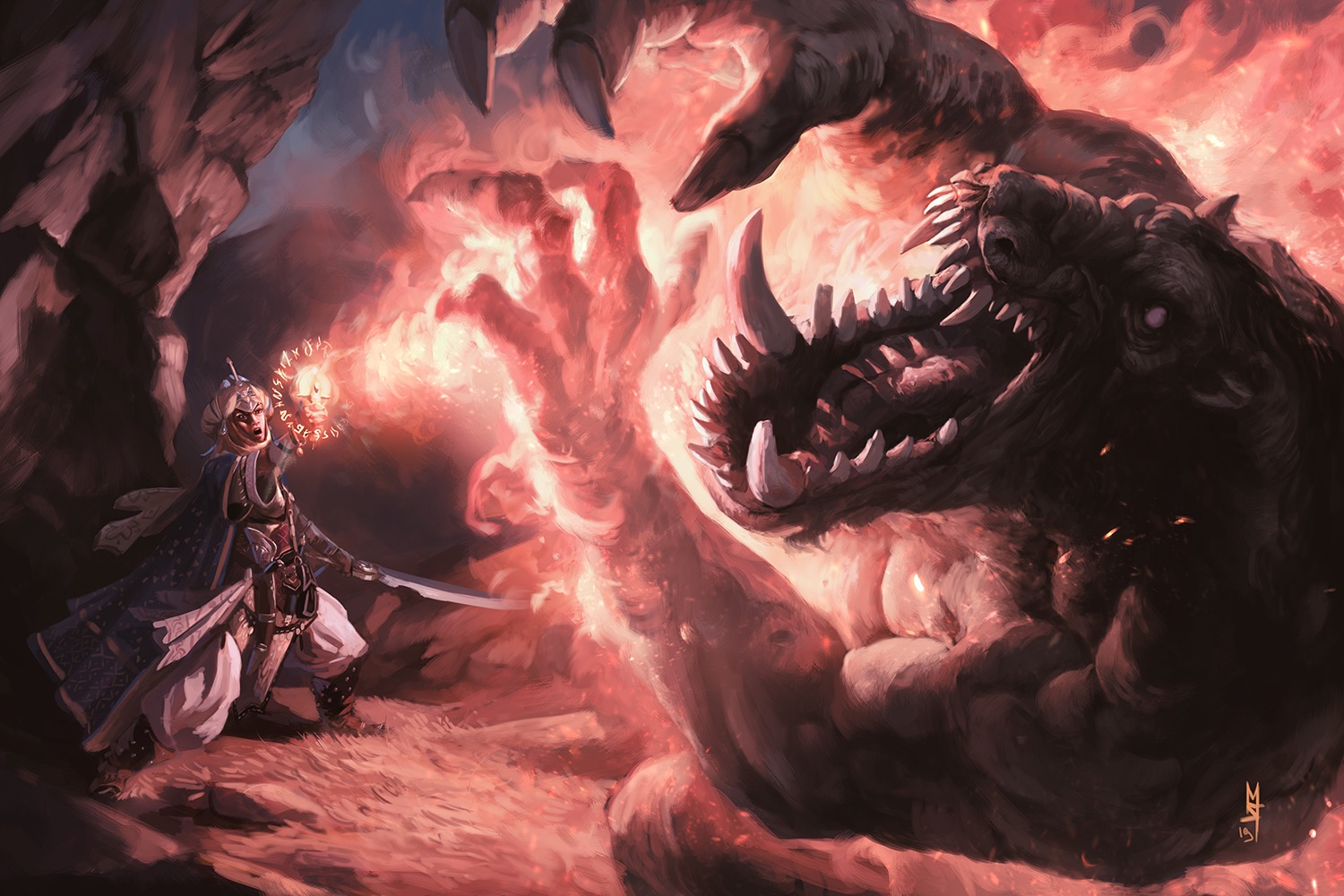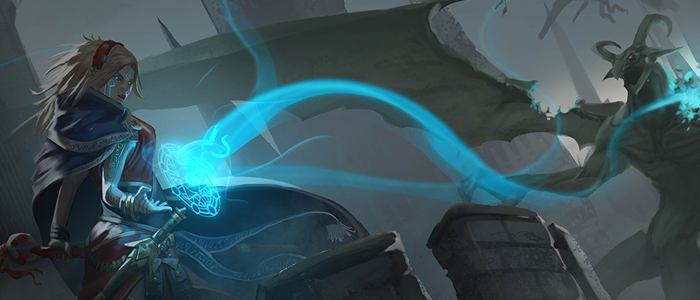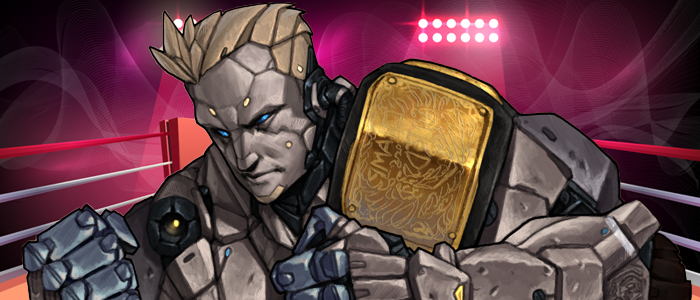Hello, friends! First edition Pathfinder was a huge game and converting everything aspect of the game can take a lot of work and a lot of time. Luckily, your old pal Luis is here to help you out with all of that. I’ve spent the past few weeks helping with conversions of monsters and magic items. This week, I’m going to dive into the magic of converting spells. Spells are such a key aspect of the game (so much so that they take up over 100 pages of the 2E rulebook!) that I thought it important they had their own article. Let’s get to work!
Before we do anything else, make sure to take a look at Paizo’s conversion document. It has a bit of advice to get you started.
The first thing to keep in mind is that you may not even need to convert a spell over to the new edition in the first place. Some spells have been renamed, had their effects folded into other spells, or been converted into rituals. Are you missing speak with dead? It’s now renamed to talking corpse! Don’t know what happened to tongues? It’s now the 3rd-level effect of comprehend language. Can’t find animate dead? Take a look at the create undead ritual! Before you do the work of converting a given spell, take some time to look through the Core Rulebook and see if it doesn’t exist already, or at least something very similar to the spell. It might save you some trouble! Unfortunately, getting a list of all the changes in spells is way beyond the scope of this article, so there’s not going to be a quick an easy way to search.
 Let’s say you’ve done the work and found that the spell you want is just not there yet. Is there some other spell that you can reflavor to get close? If not, then it’s probably time to get converting. Create pit won’t just magically appear on its own, darn it! I think the first thing to consider is the level of the spell. A spell’s original level is a good starting point, but some spells were either too weak for their own level or too strong for their level. In that case, you might consider changing the level of the spell. A spell that only deals damage is easy enough to convert because you can just line it up with the damage of other spells of its level. In fact, pure damage spells can kind of land at whatever level you want. Fiery shuriken was a 2nd-level spell originally, but could work just as well as a 6th-level spell, so long as the damage is in line with other 6th-level spells. It’s once a spell has effects beyond pure damage that you need to start considering the appropriate level. A spell that imparts a simple condition like clumsy or sickened can land pretty much wherever as well, so long as the value isn’t excessive. Once you start imparting slowed, stunned, or any other conditions that can potentially limit a character’s actions, you should be very careful about the level. Low level spells rarely do worse than frightened, so a slowing spell is probably not a good 1st-level spell. When in doubt, take a look at some classic spells like charm, fear, paralyze, slow, and so on to get a good idea what level is a good fit for the effect you’re looking to use.
Let’s say you’ve done the work and found that the spell you want is just not there yet. Is there some other spell that you can reflavor to get close? If not, then it’s probably time to get converting. Create pit won’t just magically appear on its own, darn it! I think the first thing to consider is the level of the spell. A spell’s original level is a good starting point, but some spells were either too weak for their own level or too strong for their level. In that case, you might consider changing the level of the spell. A spell that only deals damage is easy enough to convert because you can just line it up with the damage of other spells of its level. In fact, pure damage spells can kind of land at whatever level you want. Fiery shuriken was a 2nd-level spell originally, but could work just as well as a 6th-level spell, so long as the damage is in line with other 6th-level spells. It’s once a spell has effects beyond pure damage that you need to start considering the appropriate level. A spell that imparts a simple condition like clumsy or sickened can land pretty much wherever as well, so long as the value isn’t excessive. Once you start imparting slowed, stunned, or any other conditions that can potentially limit a character’s actions, you should be very careful about the level. Low level spells rarely do worse than frightened, so a slowing spell is probably not a good 1st-level spell. When in doubt, take a look at some classic spells like charm, fear, paralyze, slow, and so on to get a good idea what level is a good fit for the effect you’re looking to use.
Once you have a good idea for the level, think about the number of actions the spell should use. The default is two actions, which is equivalent to a standard action in 1E. If a spell was a swift action cast, it’s probably a one action spell while a full-round or 1 round spell is a three action spell. Anything that took longer to cast probably takes the same amount of time. 1 minute and 10 minute castings still exist in 2E, so they are not out of the questions. However, once a spell starts taking longer than a minute to cast, consider if it would work better as a ritual. Not only do they serve a different role narratively and within the game itself, but they also allow non-spellcasters to join in on the fun. I think it’s cool that anyone can take the time to summon an angel to help out and it might be cool if create demiplane became a ritual to allow anyone to have fun with their own pocket dimension.
 As your spell is coming together, think about how the spell will play with the new mechanics of 2E. A damage spell obviously has a basic saving throw to work with, but other spells can also flourish with the new degree of success system. Ear-piercing scream could now both deal damage and add the stunned 1 condition on a critical failure. Magic missile and heal get to play with the new action economy, so maybe your spell could have additional effects based on how many actions you use to cast it. Ear-piercing scream might increase the size of the area based on how many actions you use—a single adjacent creature on one action, all adjacent creatures with two actions, and all creatures within 15 feet on three actions. Heightened versions of the spell can not only deal more damage but also gain extra effects. Maybe ear-piercing scream doesn’t have the stunned condition right away, but gains it and improves it as we heighten the spell.
As your spell is coming together, think about how the spell will play with the new mechanics of 2E. A damage spell obviously has a basic saving throw to work with, but other spells can also flourish with the new degree of success system. Ear-piercing scream could now both deal damage and add the stunned 1 condition on a critical failure. Magic missile and heal get to play with the new action economy, so maybe your spell could have additional effects based on how many actions you use to cast it. Ear-piercing scream might increase the size of the area based on how many actions you use—a single adjacent creature on one action, all adjacent creatures with two actions, and all creatures within 15 feet on three actions. Heightened versions of the spell can not only deal more damage but also gain extra effects. Maybe ear-piercing scream doesn’t have the stunned condition right away, but gains it and improves it as we heighten the spell.
Finally, one thing to consider is how the spell will actually feel in play. Take some time to think how the spell would feel if an enemy spellcaster used it against your character every round of combat. Does it become extremely aggravating or grind gameplay to a halt while everything resolves? Alternatively, how would you feel if you used the spell, but everyone succeeded (but not critically succeeded) the spell’s save every time. Does it still feel worth the spell slot you cast? It’s easy enough to look at numbers and effects and get things where they look right, but until they hit the table, it might not play out how you expect, for ill or for good.
As always, to showcase this advice I’m going to convert a spell! As I mentioned, create pit isn’t going to convert itself! The first thing I’m going to do is increase it’s level by 1. A level 2 create pit was too good and dominated a lot of combats at its level, mostly because of how potent its battlefield control was. I think bumping it up to 3rd-level will still let it shine but not be the go-to control spell for its level. I also get to play a bit with the degrees of success and the heightening system to both keep the spell in check and also allow it to remain viable at higher levels. Let me know what you think! Next week, I’ll be working on the conversion of adventure material. I hope you’ll join me then!
Create Pit Spell 3
Conjuration
Traditions arcane, primal
Cast [three-actions] (material, somatic, verbal)
Range 120 feet; Area 10-foot burst
Saving Throw Reflex; Duration sustained up to 1 minute
You create an extradimensional hole with a depth of 10 feet. You must create the pit on a horizontal surface of sufficient size. Since it extends into another dimension, the pit has no weight and does not otherwise displace the original underlying material. You can create the pit in the deck of a ship as easily as in a dungeon floor or the ground of a forest. Creatures standing in the area where you conjure the pit and any creatures that end their turn adjacent to the pit must attempt a Reflex save. Creatures that are pushed, pulled, or otherwise moved into the pit via forced movement also attempt a Reflex save.
Critical Success The creature is unaffected and moves to an open space adjacent to the pit, if it wasn’t at one already.
Success The creature moves to an open space adjacent to the pit, if it wasn’t at one already, and is flat-footed until the start of its turn.
Failure The creature falls into the pit and takes damage from the fall. The creature can’t attempt to Grab an Edge to catch itself.
Critical Failure As failure, but the creature takes twice the normal damage from the fall.
Creatures that fall into the pit can attempt to climb out. The pit’s coarse stone walls require a successful DC 20 Athletics check to Climb. When the duration of the spell ends, creatures within the hole rise up with the bottom of the pit until they are standing on the surface over the course of a single round.
Heightened (+3) The pit’s area and depth increases by 10 feet. The DC to Climb the pit’s wall increases by 10.






